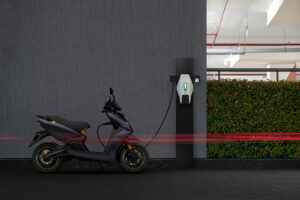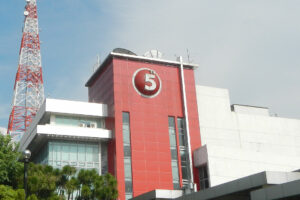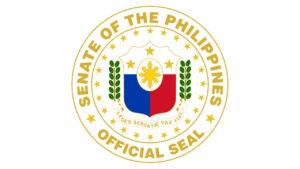EO12: A game-changer in our drive for green development

Like other green energy advocates and many in the motoring industry, our consumer advocacy group Bantay Konsyumer, Kalsada, at Kuryente (BK3) was heartened by President Bongbong Marcos’ signing of Executive Order No. 12 (EO 12) in January.
EO 12 mandates that tariffs on imported electric vehicles (e-vehicles) will be temporarily removed (import duties on e-vehicles used to range from 5% to 30%), while rates on parts and components will be reduced. Under the presidential order, e-vehicles such as cars, minibuses, vans, buses, trucks, and even bicycles, are all supposed to enjoy zero tariffs over a five-year period.
We find one problem with it, though: The tariff did not clearly or explicitly apply to hybrid electric vehicles and e-tricycles.
Everything from foreign exchange rates, manufacturing and shipping costs, and parts supplies affect the final pricing of electric vehicles like any other import. With the signing of the EO, a significant drop in the price of e-vehicles and their parts could be expected. This could have a very palpable ripple effect on many other items and services that could ultimately benefit all consumers.
From a broad development-oriented perspective, Malacañang’s order is truly noteworthy. It is premised on a concern for key issues that challenge the whole world today. The order explicitly mentions its concern over air pollution, people’s health, green energy, and even micro-mobility.
We in BK3 have argued that if we want to maximize the positive effects of the policy set under EO 12, its scope should be broadened to cover e-motorcycles and e-tricycles that are fast becoming the lead workhorses in the public transport sector and in the growing delivery services of burgeoning online app-enabled businesses.
TWO WHEELSThe government itself has estimated that as of 2022, there were about 47,866 unregistered motorcycles in the country. This is based on data from 2016 to 2020 as presented by the Land Transportation Office (LTO) at a Senate hearing last January.
In the LTO’s presentation at a hearing of the Senate Blue Ribbon Committee on the implementation of Republic Act No. 11235 or the Motorcycle Crime Prevention Act, the agency said that there was a reported total of 10,223,623 new motorcycle stock from 2016 to 2020. However, there were only 10,175,757 new registrations of motorcycles in the same period.
All things considered, there are about 7,328,116 registered motorcycles as of December 2020, which consist of 1,949,589 new units, and 5,378,527 units for renewal. This includes motorcycles with and without sidecars, and non-conventional units or those so-called three-wheeled vehicles, including electric ones. A majority of registered tricycles are being used as a mode for public transportation.
Given the proliferation of the ubiquitous tricycle, our country’s experience with the pandemic has shown us how indispensable motorcycles are for affordable point-to-point delivery and commuting across our archipelago.
THE GOOD AND THE BADOn the positive side, these two-wheeled vehicles are work enablers for financially disadvantaged Filipino families, especially as a cheaper alternative to commuting to and from work or school and as a means for deliveries for various businesses.
The downside is that these two-stroke motorcycles are a significant contributor to air pollution. Of the 2.9 million registered vehicles in the National Capital Region, almost half (1.4 million) are motorcycles, contributing significantly to the air pollution in the metropolis.
There clearly is a need to push for the inclusion of two- and three-wheeled vehicles in the tax break for electric vehicles, as this can be an opportunity to shift consumers away from fossil fuels to a green alternative.
As originally framed, those who are given perks by EO 12 are vehicle owners from the AB socio-economic bracket. Perhaps unwittingly, EO12 discriminates against the great majority of working Filipinos who are only able to buy two- or three-wheeled vehicles. Only class A and B can afford four-wheeled vehicles.
Indeed, to borrow the words of another advocate, “why exempt only four-wheeled vehicles from the levying of importation taxes? Don’t we want to encourage more affordable mobility options for Filipinos? Why are electric cars then apparently favored over electric motorcycles or scooters in the EO?”
There is a need to make the order more financially inclusive. If the order’s coverage is expanded and thus boosting the utilization of two-wheeled motorcycles along with the rest of the electric vehicle industry, the policy can even help enhance the country’s employment rate.
Given the soaring price of gasoline, electric vehicles are becoming an even more attractive option for economically disadvantaged Filipinos.
SUCCESS STORIESAt the very least, we have seen some local success or best practice models in this regard in communities of Boracay and Naga.
As early as 2013 in Boracay, and in Naga in 2015, a local producer of e-motorcycles has been able to provide fleets of e-motorcycles that helped create green jobs for members of the pertinent communities, significantly boosting local employment while addressing the concern for the utilization of a green energy alternative that is even less costly compared to gasoline.
There is no reason to doubt that these success stories could be replicated. Coupled with a program to support the local industry and bold entrepreneurs and innovators to create and maintain e-vehicles, EO 12 could help unlock many development bottlenecks even in our most far-flung barangays. The Palace should expand the coverage of the EO now. It is a real game-changer.
Louie C. Montemar is a Professor of Sociology and Political Science and Fellow for Education of the Stratbase ADR Institute.




